What is M.2 vs. SATA? What is the difference between M.2 SSD and SATA SSD? This article will explain them deeply from SATA Bus standard vs. PCI-E Bus standard, and from AHCI mode vs. NVMe mode.
Brief Introduction to SATA SSD and M.2 SSD
As we all know, compared with HHD (hard drive disk), SSD (solid state drive) has advantages of faster read-write speed, smaller size, no noise, and so on (click Comparison among SSD, HDD, and SSHD to know more). Generally speaking, SSD’s performance is better than that of HHD.
Many computer users would like to replace the old HHD with a new SSD. However, the interface type of SSD will also have influence on its performance. Some users notice that but they don’t know how interface type affects the performance. And they don’t know the specific differences between them.
Especially, some users may not know too much about M.2 SSD vs. SATA. And they ask questions online like the following one.
Alright guys since atm the current moment SSDs prices aren’t as crazy as they use to be at launch I’ve decided to finally change my mechanical drives to SSDs for boot and storage drive. I’m currently looking at 1TB sizes but trying to stay under $150 USD and SATA SSDs seem to be a lot cheaper than m.2 variants a bit I don’t want to be sacrificing. Which would you guys recommend and what particular drive?— www.techpowerup.com
Then, what’s the difference between SATA SSD and M.2 SSD? And even more, what’s the difference between NVME SSD with them?
SATA SSD
What is SATA SSD? SATA SSD is an SSD with SATA (Serial Advanced Technology Attachment) interface. So far, SATA interface has three versions. The current popular version is SATA Revision 3.0 (so-called SATA 6Gbps), which was published by Serial ATA International Organization (SATA-IO) in 2009.
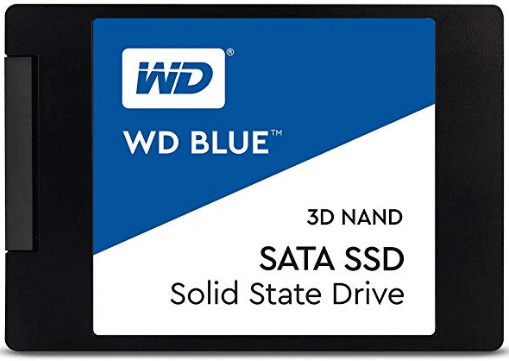
SATA interface mainly uses AHCI (Advanced Host Controller Interface) protocol. The Throughput (Transfer Rate) value of SATA 6Gbps is 6 Gb/s and its theoretical data transfer speed is 600MB/s.
M.2 SSD
M.2 SSD is an SSD with M.2 interface. M.2 is also called Next Generation Form Factor (NGFF), which is a new generation interface standard tailored for Ultrabook to replace the mSATA interface. Compared with mSATA SSD, M.2 SSD has advantages of smaller size and better transmission performance.

M.2 interface can be divided into two types: B-key (Socket 2) and M-key (Socket 3). B-key interface can support SATA bus standard and PCI-E 3.0X2 bus standard, and it may support AHCI protocol or NVMe protocol.
M-key interface only supports PCI-E 3.0X4 bus standard and NVMe protocol. The theoretical read-write speed can be up to 4 GB/s.
In addition, M.2 interface has three popular module specifications. They are 2242, 2260, and 2280, respectively. The most common one is 2280, therein the number 22 stands for width and the number 80 stands for length.
M.2 SSD vs. SATA SSD
SATA Bus Standard vs. PCI-E Bus Standard
A Bus is a common communication trunk that transmits information between various functional components (such as CPU, memory, hard disk, and various input and output devices) of a computer. It is a transmission harness composed of wires.
Bus standard stipulates module side, pin location and other technical specifications. Thus, manufacturers can produce chips and devices (including hard disk) according to the bus standards and specifications.
SATA Bus standard is an external bus standard for hard disk. It adopts serial connection mode, which makes the interface have advantages of simple structure, fast transfer speed, high execution efficiency, stronger error correcting capacity, and support for hot plug.
PCI-E Bus standard is an internal local bus standard, which is put forward to replace PCI (Peripheral Component Interconnect) bus. It is a high-speed serial point-to-point dual-channel high-bandwidth transmission.
In PCI-E bus standard, the connected devices are allocated exclusive channel bandwidth and do not share resources with other devices. It mainly supports active power management, error reporting, end-to-end reliable transmission, hot plug, quality of service (QOS) and other functions. Above all, it has a very high transfer rate.
From the angle of read-write speed, PCI-E bus standard is prior to SATA bus standard. In SATA bus standard, the data operation process is as follows: data will be first read from the hard disk to memory, and then extracted to CPU for calculation, and then written to memory after calculation, and finally stored to hard disk.
However, in PCI-E bus standard, the data is directly connected to the CPU through the bus and the need for memory to call the hard disk is eliminated, so that the PCI-E transfer speed is close to the maximum transmission speed.

However, the read-write speed is not only related to bus standard, but also is affected by data transfer protocols such as AHCI and NVMe.
AHCI vs. NVMe
AHCI and NVMe are all data transfer protocols, which work above interface to determine data transfer method. Besides, there are other data transmission protocols like IDE (this protocol is relatively old).
AHCI is a technical standard made by Intel Corporation, which stipulate a hardware mechanism that allows software to communicate information with SATA storage devices. AHCI can make SATA storage device activate advanced SATA functions such as support for 32 ports, elimination of master / slave handling, hot plug, etc.
In other words, AHCI protocol can realize the most potential of SATA interface. It makes each transmission queue carry 32 instructions, optimizes hard disk queue, and utilize NCQ technology to make hard disk access data fast and smoothly and to reduce waste of time caused by movement of heads.
However, AHCI protocol is designed for traditional HHD, so it can’t realize the potential of SSD. Even if the M.2 SSD uses PCI-E bus, the read-write speed can’t still exceed 600 MB/s when it uses AHCI protocol. And hence, NVMe protocol comes out.
NVMe (Non-Volatile Memory express) protocol is first published in 2011. Compared with AHCI, it can reduce latency time greatly owing to no need for accessing register when giving a command.
Besides, it can support 64 queues and each queue can carry 64000 instructions, so that the IOPS ability is improved greatly. In a word, NVMe can extremely activate the potential of SSD.

Let’s make a conclusion. If an M.2 SSD only supports AHCI protocol, its read-write performance is same as that of SATA SSD. If an M.2 SSD uses NVMe protocol, its performance will be much better than that of SATA SSD.
Besides, users can change data transfer protocol in BIOS to improve computer performance.
Here is a tutorial (take AHCI as an example).
Step 1: Enter firmware.
Step 2: Change AHCI protocol.
- Navigate to Advanced tab and set Local Bus IDE adapter as Both (Primary stands for IDE protocol, secondary stands for AHCI).
- There are various BIOS interfaces, please ensure set SATA Configuration as AHCI mode.
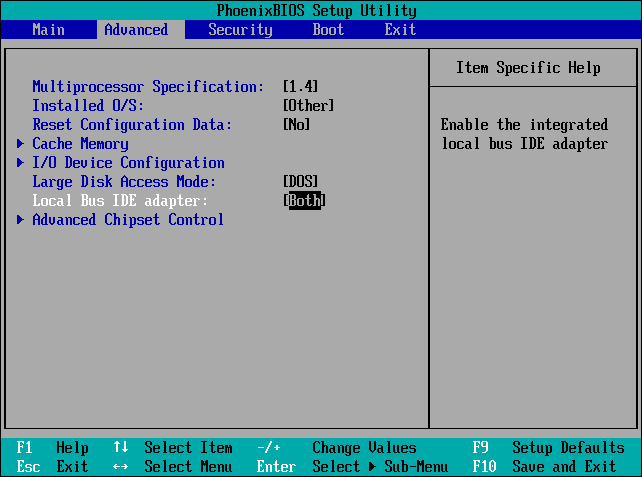
You may be also concerned about How to Get Best Performance from SSD in Windows 10/8/7.
Real Disk Performance
As we all know, the real performance of a hard disk in a computer is affected by various factors. Users usually can run a benchmark to test the real performance of SSD. As for the test, Disk Benchmark feature of MiniTool Partition Wizard is recommended for free.
MiniTool Partition Wizard FreeClick to Download100%Clean & Safe
Here is a guide to Disk Benchmark.
Step 1: Open Disk Benchmark feature.
- Download and launch MiniTool Partition Wizard to get its main interface.
- Click Disk Benchmark on the toolbar.
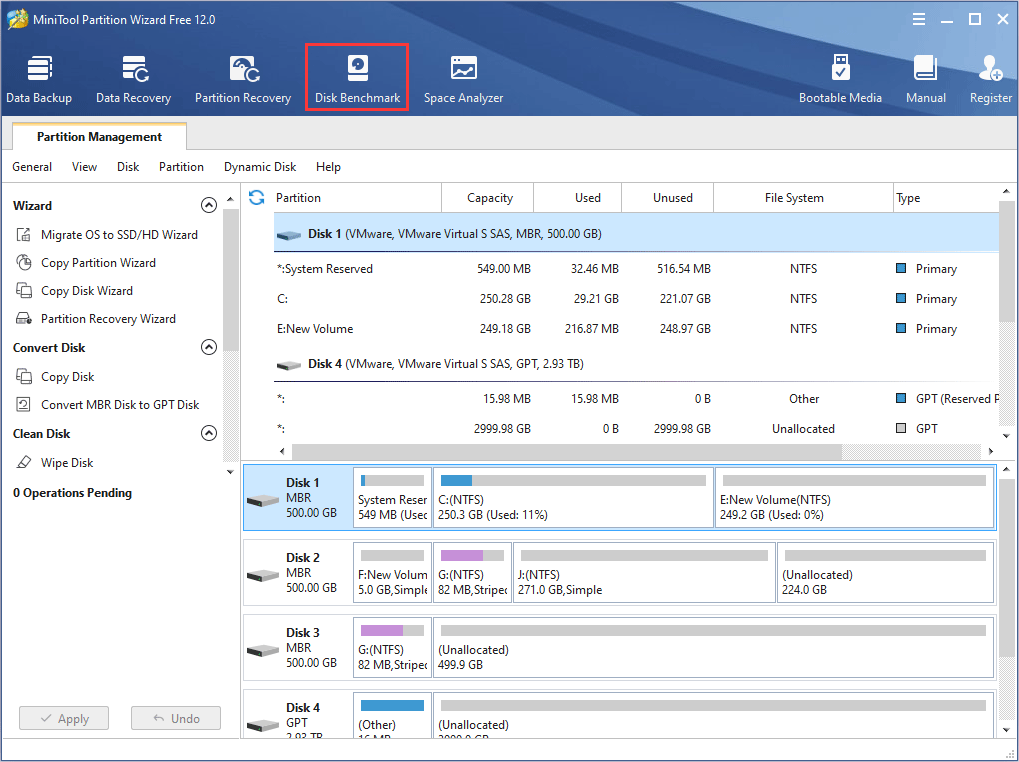
Step 2: Select a drive and set parameters to test the disk performance.
- Select a drive: Computer users select a local disk or a volume to test its performance. The physical disk where the local disk belongs to will be listed afterwards.
- Transfer Size: It determines the block size in data transfer process. Users can choose a value from 1 KB to 2048 KB. But if users want to test the performance of an SSD, they should choose a small transfer size.
- Total Length: It ranges from 100 MB to 4096 MB. It determines the total data size that is written and read.
- Queue Number: It ranges from 1 to 512.It determines the number of I/O requests that are capable of waiting for service in port queue.
- Thread Number: It ranges from 1 to 64.This value is usually related to CPU. It is related to the kernel number of the computer and Hyper-Threading technology.
- Test Mode: There are three modes for users to choose: Sequential, Random, and Sequential & Random. Users should choose random mode if they want to test the performance of an SSD.
- Cool Down Time: It is used to reduce the hard drive temperature before starting the next test.
- Parameter Recommendation: Set transfer size as 4 KB, total length as 1024 MB, queue number as 32, thread number as 1, and test mode as random. 2. Set transfer size as 4 KB, total length as 1024 MB, queue number as 256, thread number as 64, and test mode as random.
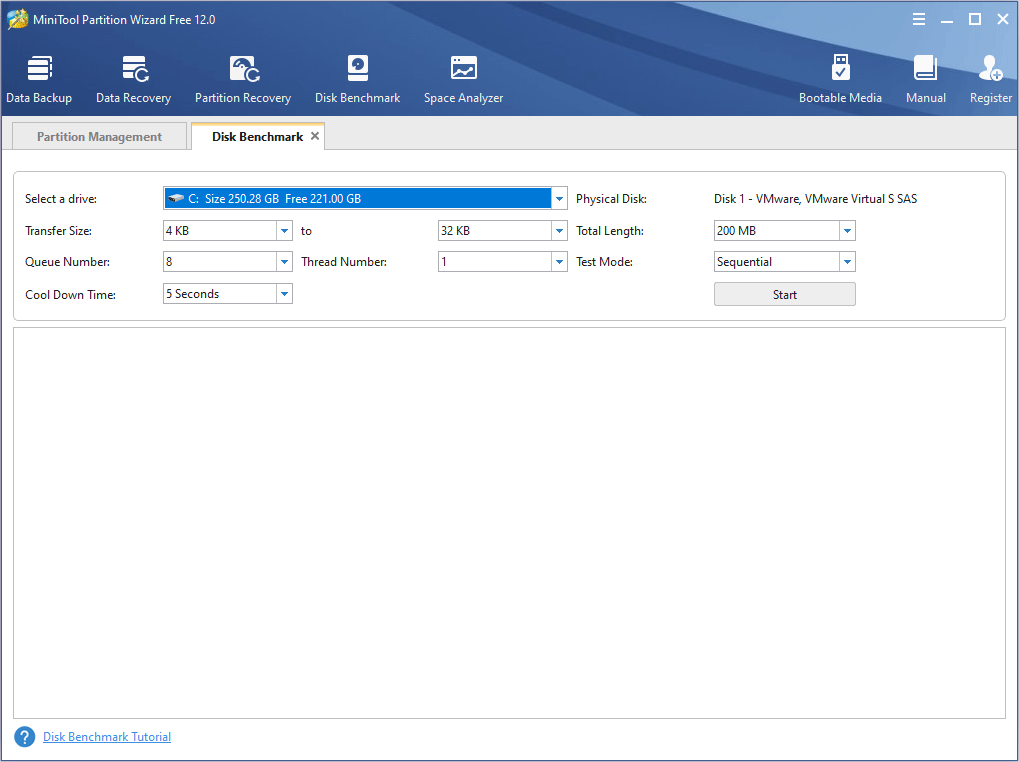
Step 3: Click Start after the parameters are set. Then, wait seconds to get a disk performance test result.
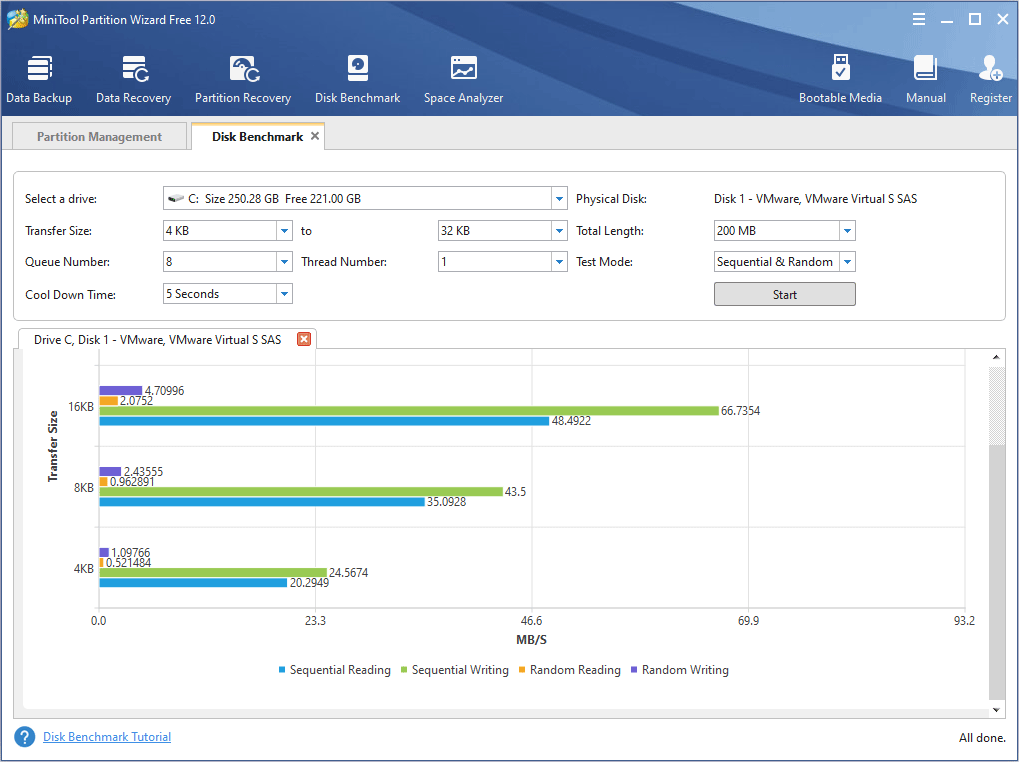
Because the tested hard drive is an SSD, users should pay attention to IOPS in random writing and reading mode. The above result just displays Throughput. So, users should make a simple calculation to get IOPS value. Here is the calculation formula: IOPS =Throughput / Transfer size. Click Disk Performance Test to know more about disk performance indicators like IOPS, Throughput, etc.
Besides, if the original computer operating system was installed on a traditional hard drive disk, users may want to know How to Migrate OS to SSD Easily without Reinstallation.
M.2 SSD Purchase Suggestions
When users buy an M.2 SSD, they must take interface type, protocol, price, and other factors into consideration.
They should check first whether the mainboard supports M.2 SSD, whether the socket is suitable for the module size, and then check whether the computer supports NVMe mode. After that, users may consider price and capacity factors.
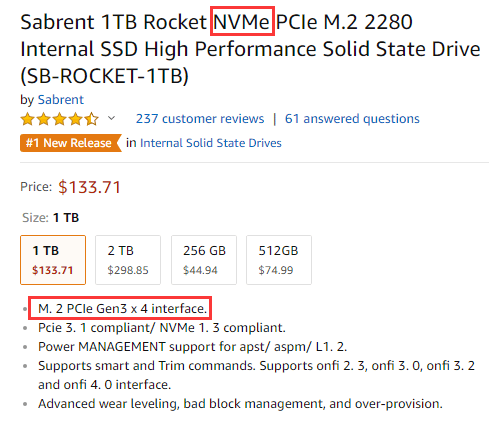
Generally speaking, if the capacities are same, the M.2 SSD using NVMe protocol is almost twice as expensive as M.2 SSD using AHCI protocol and SATA bus. But if possible, it’s still worth purchasing an M.2 with NVMe protocol.
Bottom Line
If you still have problem about M.2 SSD and SATA SSD after reading the post, please leave a comment below for discussion. If you have deeper comprehension about them, please also leave a comment for sharing. Surely, if you have problem with disk performance test, please email to [email protected] for help.
M.2 SSD vs SATA SSD FAQ
SATA SSD mainly uses AHCI (Advanced Host Controller Interface) protocol. Its theoretical data transfer speed is 600MB/s.
An M.2 SSD can support AHCI or NVMe protocol. If the M.2 SSD uses AHCI protocol, its read-write performance is same as that of SATA SSD. If it uses NVMe protocol (PCI-E), it will be much faster than SATA SSD.


User Comments :